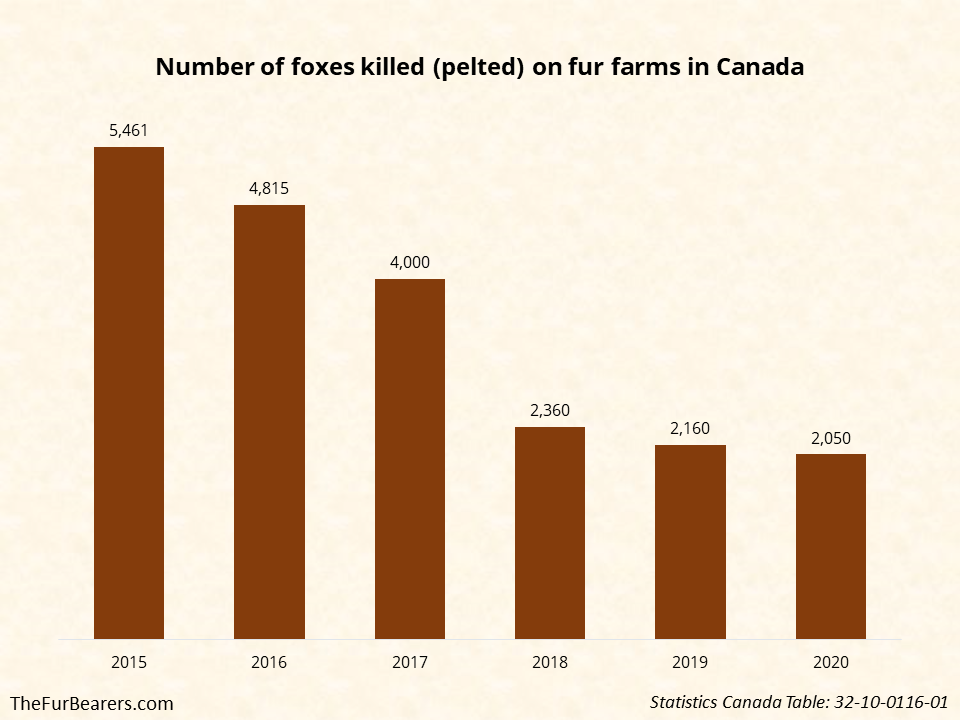
Statistics Canada has published new data on fur farming in Canada. The new data update adds information for years 2019 and 2020. There is reason to be optimistic: fewer and fewer animals are being bred and killed on Canada’s fur farms. That means less animals are suffering in small wire cages, and it also marks the continual decline of fur farming in Canada.
Fox farming at historic lows; mink farming continues to decline
The number of farmed foxes that are killed for their fur is at its lowest level since Statistics Canada started publishing this data in 1979. 2,050 foxes were killed in 2020. For comparison, in the late 1980s, over one hundred thousand farmed foxes were being pelted annually in Canada.
The number of mink killed on fur farms continues to decline as well: 1,011,600 farmed mink were killed in 2020. Taken together, 1,013,650 mink and foxes were killed by the fur farm industry in 2020. While a single animal kept on a fur farm is unacceptable, this data reveals that fewer and fewer animals are suffering each year due to the decline of the fur industry.

Statistics Canada doesn’t collect data for other animals farmed for their fur such as chinchillas or rabbits, so this is an incomplete picture. However, with more and more retailers going fur-free and people speaking out against fur farming, this downward trend is likely representative across all fur farming sectors. This data is more evidence that the era of fur farming is coming to an end.
People across Canada and the world are making their voices heard: that fur-bearing animals belong in the wild, not in cages. That their fur belongs to them, not to the fashion industry.
